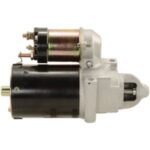The engine is often called the heart of your vehicle, but the cooling system is its unsung hero. Just imagine your car engine enduring thousands of explosions every minute while you cruise down the highway. This intense process generates a tremendous amount of heat. Without an efficient cooling system, your engine would quickly overheat, leading to severe damage and costly repairs. Understanding how to repair your car cooling system is not just about fixing leaks; it’s about ensuring the longevity and reliability of your vehicle.
There are primarily two types of car cooling systems: liquid-based and air-based. Liquid cooling systems are the standard in most modern vehicles. They work by circulating coolant through the engine block to absorb heat. This heated coolant then travels to the radiator, where the heat is dissipated before the coolant recirculates back into the engine. Air cooling systems, less common in contemporary cars, utilize aluminum fins around the engine to dissipate heat directly into the air.
Regardless of the type, a malfunctioning cooling system can lead to a cascade of problems. Let’s delve into some common issues and how to address them.
Common Car Cooling System Problems
Alt text: Diagram illustrating the components of a car cooling system, highlighting the radiator, hoses, water pump, and engine block.
Water Pump Failure: The Heartbeat of Coolant Circulation
The water pump is crucial for circulating coolant throughout your engine. Driven by a belt connected to the engine, it ensures a constant flow of coolant to remove heat. If the water pump fails, coolant circulation stops, and your engine can overheat rapidly. Common signs of water pump failure include a high-pitched whining noise from the engine bay, coolant leaks near the pump, and engine overheating. Knowing how to repair your car cooling system often starts with diagnosing and addressing water pump issues.
Leaky Radiator Hoses: Coolant Escape Routes
Radiator hoses are the pathways for coolant to travel between the engine and radiator. These rubber hoses are subjected to high pressure and temperature fluctuations over time, making them prone to leaks, cracks, and bursts. A leaking radiator hose will lead to coolant loss, which can quickly result in engine overheating. Regularly inspecting your radiator hoses for swelling, cracks, or leaks is vital. Learning how to repair your car cooling system includes knowing how to identify and replace faulty hoses.
Radiator Leaks: Damage to the Heat Exchanger
The radiator itself is a delicate component with a network of thin tubes and fins designed to dissipate heat. Road debris, corrosion, or impacts can damage the radiator, causing leaks. Radiator leaks reduce the system’s ability to cool the engine effectively, leading to overheating. Identifying and repairing radiator leaks is a key aspect of how to repair your car cooling system. Small leaks might be temporarily sealed with radiator sealant, but often, radiator replacement is necessary for a lasting solution.
Thermostat Failure: Temperature Regulation Gone Wrong
The thermostat is a temperature-sensitive valve that regulates coolant flow to the radiator. When the engine is cold, the thermostat restricts coolant flow to help the engine reach operating temperature quickly. Once the engine is hot, the thermostat opens, allowing coolant to flow to the radiator for cooling. A malfunctioning thermostat can get stuck closed, preventing coolant from reaching the radiator and causing overheating, or stuck open, leading to prolonged engine warm-up times, especially in cold weather. Understanding thermostat function is essential in how to repair your car cooling system effectively.
How to Diagnose Car Cooling System Issues
Before attempting any repairs, accurate diagnosis is crucial. Here are steps to diagnose common cooling system problems:
- Visual Inspection: Check for visible coolant leaks under the car, around hoses, the radiator, and the water pump. Look for signs of steam or coolant smell after driving.
- Check Coolant Level: Ensure the coolant level in the reservoir is within the recommended range. Low coolant levels indicate a leak somewhere in the system. Caution: Never open the radiator cap when the engine is hot, as this can cause severe burns due to pressurized hot coolant.
- Temperature Gauge Monitoring: Keep an eye on your car’s temperature gauge. If it consistently reads higher than normal or enters the red zone, it indicates overheating, a likely cooling system issue.
- Hose Inspection: Squeeze radiator hoses (when the engine is cool) to check for softness, cracks, or swelling. Stiff or mushy hoses need replacement.
- Pressure Test: A cooling system pressure tester can help identify leaks that are not visually apparent. This tool pressurizes the system, allowing you to pinpoint leaks by observing pressure drops.
- Thermostat Test: If you suspect a thermostat issue, you can remove it and test it in hot water to see if it opens and closes properly.
How to Repair Your Car Cooling System: Step-by-Step Guide
Alt text: Close-up image showing hands working on a car engine bay, focusing on radiator hoses and cooling system components, illustrating car cooling system repair.
While some cooling system repairs are best left to professionals, many car owners can tackle basic repairs themselves. Here’s a general guide on how to repair your car cooling system for common issues:
Safety First: Always ensure the engine is completely cool before working on the cooling system. Disconnect the negative battery terminal for added safety. Wear gloves and eye protection.
1. Replacing Radiator Hoses:
- Drain Coolant: Partially drain the coolant from the radiator drain plug or lower radiator hose. Dispose of coolant properly according to local regulations.
- Remove Old Hose: Loosen hose clamps using pliers or a screwdriver and carefully remove the old hose.
- Install New Hose: Install the new hose, ensuring it’s properly seated. Secure hose clamps tightly, but don’t overtighten.
- Refill Coolant: Refill the cooling system with the correct type and mixture of coolant and water as specified in your car’s owner’s manual.
- Bleed the System: Bleed air from the cooling system by running the engine with the radiator cap off (when cool enough to do so safely) and topping off coolant as needed until no more air bubbles appear.
2. Replacing the Thermostat:
- Drain Coolant: Partially drain the coolant as above.
- Locate Thermostat Housing: The thermostat housing is usually located where the upper radiator hose connects to the engine.
- Remove Housing: Unbolt the thermostat housing and carefully remove it. Note the orientation of the old thermostat.
- Install New Thermostat: Install the new thermostat in the same orientation as the old one, using a new gasket or sealant if required.
- Reassemble and Refill: Reattach the thermostat housing, refill coolant, and bleed the system as above.
3. Addressing Minor Radiator Leaks:
- Radiator Sealant: For small pinhole leaks, radiator sealant can be a temporary fix. Follow the product instructions carefully. Note: Sealant is not a permanent solution and radiator replacement might still be needed.
- Professional Repair: For larger radiator leaks or damage, it’s best to consult a professional for radiator repair or replacement.
4. Water Pump Replacement:
- Water pump replacement is a more complex task often involving removing belts, pulleys, and potentially other engine components. Due to its complexity and importance, water pump replacement is generally recommended for experienced DIYers or professional mechanics. If you are unsure, seeking professional help is advisable when learning how to repair your car cooling system concerning the water pump.
How To Maintain Your Car Cooling System for Longevity
Alt text: Infographic with car cooling system maintenance tips, including checking coolant levels, regular inspections, and coolant flushes.
Preventive maintenance is key to avoiding cooling system problems and costly repairs. Here’s how to maintain your car cooling system:
- Regular Coolant Checks: Check your coolant level regularly and top it off as needed. Use the correct type of coolant recommended for your vehicle.
- Coolant Flush and Replacement: Follow your car manufacturer’s recommended intervals for coolant flush and replacement. Old coolant can become corrosive and less effective.
- Hose and Belt Inspections: Regularly inspect radiator hoses and drive belts for cracks, wear, or damage. Replace them proactively before they fail.
- Radiator Inspection: Visually inspect the radiator for debris buildup on the fins. Gently clean debris with a soft brush or compressed air to improve airflow and cooling efficiency.
- Pressure Cap Check: Have your radiator pressure cap tested periodically. A faulty pressure cap can affect system pressure and cooling efficiency.
Conclusion
Alt text: Car mechanic inspecting a car cooling system, emphasizing professional car cooling system leak repair services.
Understanding how to repair your car cooling system and performing regular maintenance are essential for every car owner. By being proactive and addressing minor issues early, you can prevent major breakdowns and ensure your engine stays cool and runs smoothly for years to come. While DIY repairs are possible for some cooling system issues, don’t hesitate to seek professional help when dealing with complex problems or if you lack the necessary experience. Protecting your car’s cooling system is an investment in its overall health and your peace of mind on the road.


